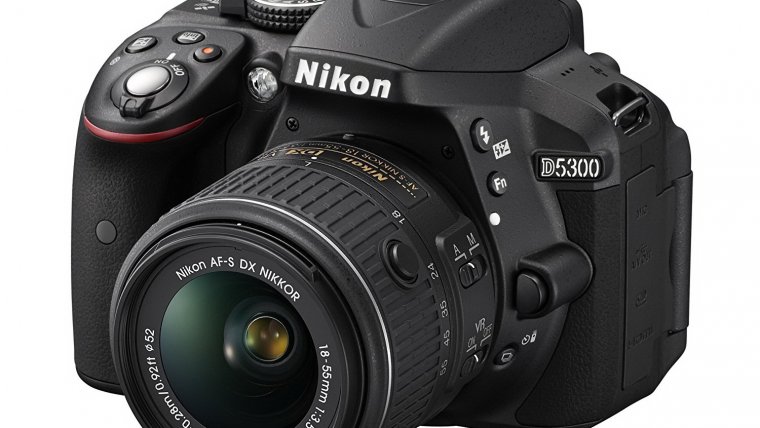
Since the mirrorless cameras are becoming all the rage these days and there’s a lot of them on the market, most of our latest articles consist of mirrorless camera reviews. It seems like the DSLRs and compact cameras are dragging behind in a way since having a portable camera with the ability to change lenses is very desirable for a lot of photographers. Still, the fact that some of them prefer the feel of a proper bulky camera will never change and thus we predict that DLSRs are far from becoming irrelevant, even on a mainstream level.
All of this talk brings us to the featured product of the day, the Nikon D5300. It’s a DSLR that’s one step above an entry-level one and was made to compete with the likes of Canon’s Rebel series of DSLRs and other similarly priced mirrorless cameras. Being released in 2014, it’s not the newest product anymore, but it’s still very relevant even in 2017 which was when Canon 6D Mark II was launched. Thanks to Nikon making slow progress with their newer models and not making a lot of new improvements or adding many new features.
This is a good story for those that are on a tighter budget, but still, want to get a respectable DSLR and the Nikon D5300 seems like a very good choice for those kinds of potential buyers. We believe that it still has enough compelling features to its side for it to be able to stay competitive in today’s camera market and all at a very reasonable price. Maybe, this is the reason why D5300 could probably be included as one of Nikon’s best camera. But, enough of talking, it’s time to take it a step further and see what the D5300 is really about and we’ll start by taking a quick glance at its specifications.
Table of Contents
We are quite impressed with how far the entry-level cameras such as the D5300 have come in terms of build quality. Despite not being made of metal or being weather sealed like Nikon Z7, it’s still a very solidly built camera and doesn’t feel like it will break apart from regular use or even some abuse. At 480 grams, it has just the right weight for a camera of its type and it’s certainly very portable for a DSLR. Handling is also very good with deep enough grip of the front and a traditional shape and design that doesn’t move away from the already proven formula. It looks and feels like a Nikon DSLR and that’s exactly what we expected from it. The control layout is also the usual affair with every button and dial positioned in their logical place and thus not being hard to use. The fully articulated screen is also a nice touch and something that both photographers and videographers will appreciate. At 3.2 inches, it’s also 0.2 inches bigger than the screens found on most DSLRs, which is also a nice plus. The only caveat here is the fact that it’s not a touchscreen and that’s certainly an unfortunate omission from Nikon.
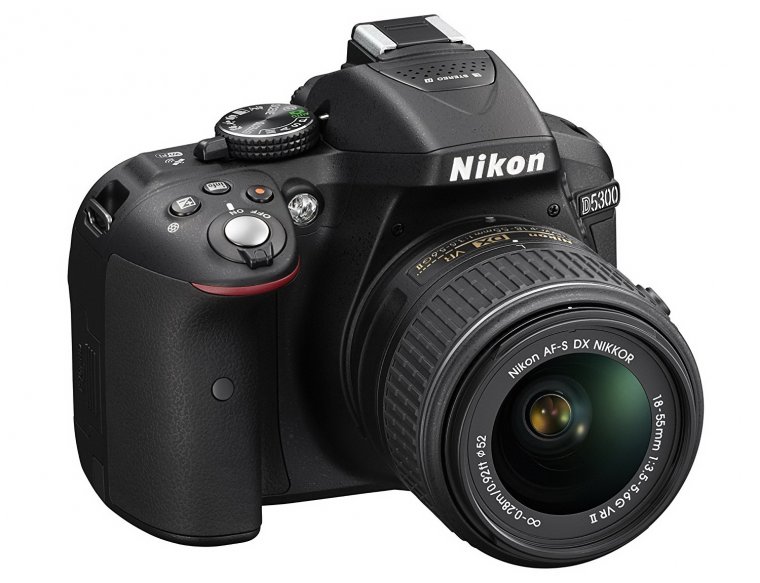
Now, let’s start with the detailed tour around the camera starting with the front. There’s not much to be seen here other than the focus assist light, infrared receiver for wireless remote communication and the lens release button. The right side of the camera holds the memory card slot, while the left side holds the microphone jack as well as the USB, HDMI and accessory ports as well as three buttons. These are the Fn, Flash and Drive/Timer buttons. It’s interesting that Nikon has decided to put them here instead of placing them on the navigation controller as shortcuts. The battery compartment is located at the bottom. Looking at the top of reveals the speaker grill, a hot shoe, stereo microphones, main mode dial which also hol ds a switch to enter live view, Movie, info and Exposure compensation buttons as well as the shutter button that also has a power switch on it. Lastly, let’s see what the back of the camera holds.
The first row of controls is located in line with the viewfinder and these are the Menu button, the “i” button which is used to change the settings in the information display and the last button is the AE-L/AF-L button. Just to the right of them lies the back control dial. Underneath it lies the thumb rest area and the last set of controls. These consist of Playback, Zoom in, Zoom out/Help and Delete buttons as well as the main navigation joystick with an OK button inside of it. Well, there are certainly no surprises here, everything fits in line with the class of the DSLR we are dealing with, meaning that you get enough of physical controls to satisfy the needs of undemanding users, but more advanced ones won’t like the lack of dual control dials or dedicated buttons for things like ISO, AF settings, Metering type and so on. We certainly won’t criticize it for the lack of those things, simply because it’s wasn’t made with such a purpose and for those type of users.
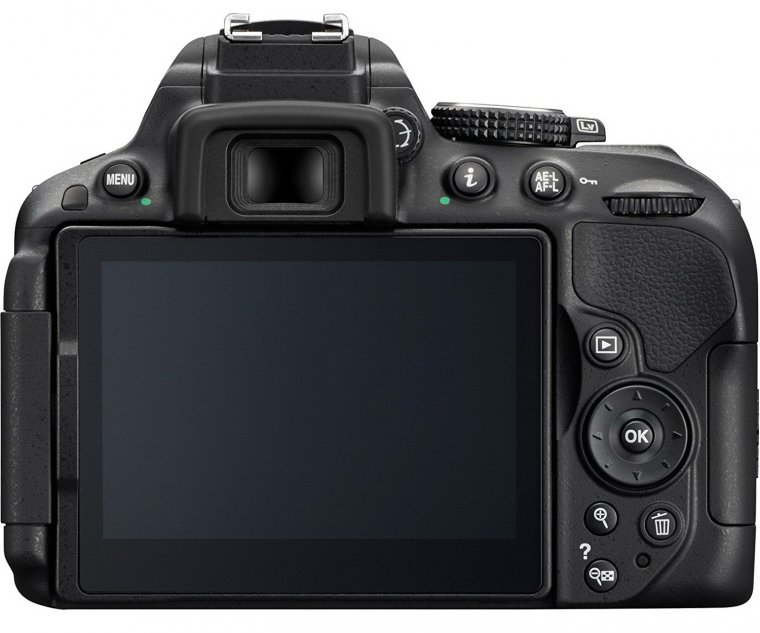
The user interface on the D5300 is simply great. It’s very easy to use no matter how experienced you are with using a Nikon camera or a DSLR in general. Every item is found in logical place, all the menus are well-organized and the navigating through the interface is smooth and quick. We especially like the way Nikon created the main information screen, with three big circles representing the aperture, shutter speed, and the ISO and each of them looking very distinctive and different from the other. This makes for a quick way to glance at the screen and immediately see what settings you’re currently shooting at. You don’t get much in terms of customization on the D5300, but there is the Fn button, which can hold functions like ISO, White Balance, HDR, AF-area mode, Image quality and more. There’s also the My Menu tab which can hold up to 20 different items which you can pick from playback, shooting, Custom settings, setup or retouch menus. The Custom settings menu itself holds some of the more advanced settings separated in the Exposure, Autofocus, Controls, Shooting/Display, Bracketing/Flash and Timers/AE-lock categories.
The big focus on the D5300 has been made on different Scene Modes and Special Effects. If you’re still learning about photography and you’re not sure what settings to pick for your current needs, you can use the main mode dial and choose one of the predefined profiles: Portrait, Landscape, Child, Sports, and Close-Up. Each of them is optimized to give you the best possible results for each of those shooting situations without requiring any input from your side. There’s also the Scene Mode found on the dial and it holds more predefined profiles, but for more specific types of occasions like when you’re taking portrait pictures at night, taking pictures of your food in a restaurant or simply taking a nice photo of a rising sun or at dawn.
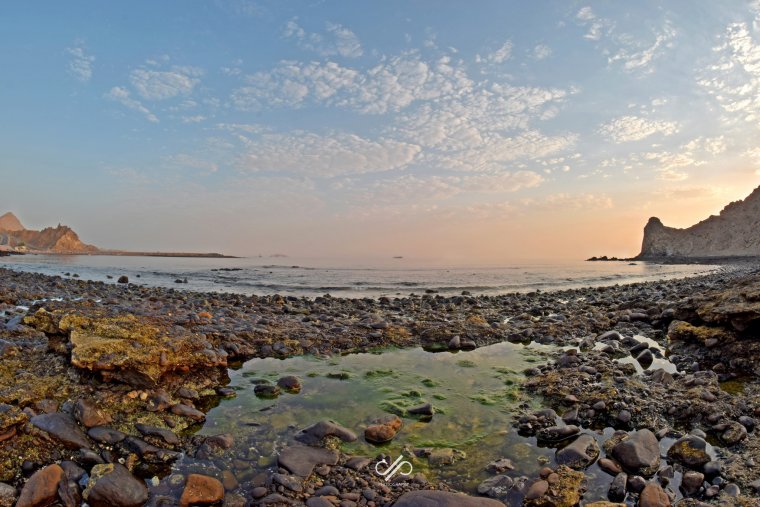
Lastly, we are left with the topic of Wi-Fi and GPS capabilities. All of the communication with a smartphone or a tablet is done via Nikon’s Wireless Mobile Utility application, which you can download for free. Upon entering the application you’ll be given two options: to remotely control the camera or to manage the existing photos and transfer them to your smart device. The remote shooting itself is easy and straightforward to use as you are only given control over the AF, timer and the shutter button. If you wish to change your exposure settings while in this mode you’ll need to switch back to the camera as you can’t change them directly from your smart device. It’s a rather strange approach to the problem of manual exposure, but it’s still better than not having any control at all. The GPS feature works as you’d expect, it adds location data to your images, so it can be viewed in the EXIF information. There’s also another neat feature which records your location during set period of time and even when you’re not taking photos and gathers it all in one LOG file that can later be opened by any type of application that can work with maps and positioning. All in all, in terms of usability, handling, ease of operation and wireless capabilities, the Nikon D5300 held its own quite well and within our expectations for an entry-level DSLR. Having GPS built in is also a nice bonus and rarely featured on a camera at this price point.
The Nikon D5300 sports a 39-point phase detect AF system, which is more than decent for a camera of its class. When it comes to normal shooting situations and where’s an adequate amount of light in your scene, it performs perfectly fast and accurate all of the time. It’s not as good in low light but still holds its own when compared to the competition. Subject tracking also isn’t bad at all and perfectly usable for taking photos of your family or kids. What’s most impressive is the sheer number of different AF modes you are given at your disposal. The three main focusing modes are the AF-A, AF-S and AF-C modes. The AF-A automatically decides the type of focusing for you, AF-S is best used for still subjects and focuses only when you press the shutter button halfway and the AF-C mode focuses continually until you take your finger off the shutter button. After that, you can pick the AF-Area mode and you get as much as six different ones to choose from; Single-point AF, Dynamic-area AF (9 points), Dynamic-area AF (21 points), Dynamic-area AF (39 points), 3D-tracking and Auto-area AF. The most interesting one is the 3D-tracking. After you select the desired focus point and place it on your subject it will automatically try to keep it on that subject as long as you keep the shutter button pressed halfway. It works even when you’re panning the camera right or left.
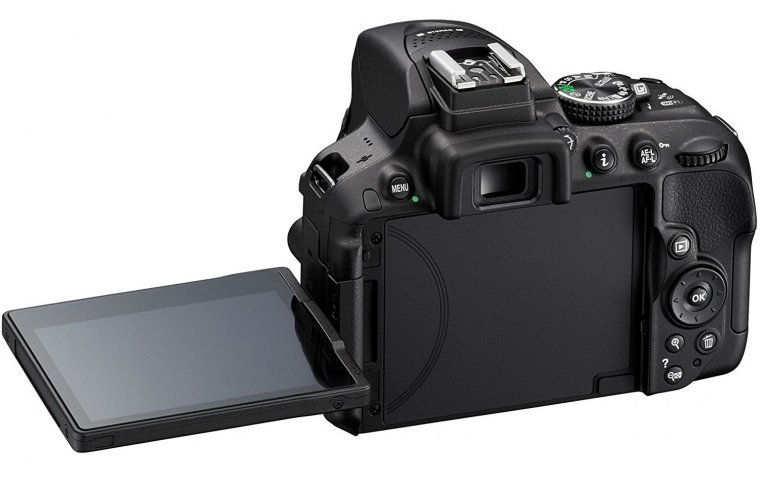
In real world use, it works quite well and will give you the best performance out of all the available modes if you’re shooting any moving subjects. We were quite happy with D5300’s performance while we were using it and we never felt any noticeable lag or slowdowns no matter what we were using it for. Performance still remains one of the strong suits of almost every DSLR, even the lower-end models. The D5300 offers two different burst rate modes: High at 5 fps and Low at 3 fps. Both of them support continuous AF. If you’re shooting JPEGs you will get a buffer size of 8 frames in High and around 20 frames in Low mode. When shooting RAW, the High speed drops to about 4 fps, but the buffer size remains the same as the one when you’re taking JPEGs. Interestingly enough, there’s no improvement to buffer size when you switch to Low mode. So, speed-wise, we have no complaints here, but the buffer size could use some improvement. What doesn’t require any improvement and remains great most of the time is battery life. The EN-EL14a battery that comes with the D5300 is an upgrade over the one found in its predecessor and thus brings an improved endurance of around 600 per charge. Do note that your battery life will drop significantly if you’re relying heavily on Wi-Fi and GPS and be sure to use them in moderation if you want to keep the good battery life. So, aside from the slightly disappointing buffer size, the D5300 has shown very respectable performance in all of our tests and is surely a DSLR which is a joy to use for everyday shooting and one you can easily rely on.
The D5300 is quite a capable DSLR when it comes to video recording, despite it being an entry-level one. While there’s no 4K recording on board, the 1080p mode at 60 fps will still be good enough for most users and give you smooth and quality looking footage. It’s also recorded at a bitrate that hovers around 38 Mbps, which is also pretty good. If you wish to record uncompressed footage than you can do so via the HDMI port and an external recorder. High-quality audio can also be recorded with the use of an external microphone being connected to the microphone jack and can also be manually adjusted. The integrated stereo microphones also aren’t half bad themselves. Manual exposure adjustment while recording is also available, but with the very familiar limitations of many Nikon DSLR, the inability to change aperture in live view. This will be a deal breaker for some, but there is a workaround in form of Manual Movie Mode which locks the aperture to the one you’ve set prior to recording and prevents it from being automatically changed during recording. Continuous autofocus is also available during recording and it generally performs ok, but it’s not fast enough to be used for anything else than for recording casual videos. It would be very helpful to have a touchscreen because of the Touch AF functionality, but still, having a big fully articulated screen is also a big benefit for every movie maker out there. The video quality coming from the D5300 is actually pretty good when compared to any kind of a DSLR with an APS-C sensor, let alone one with such a low price tag. If you can work within some of its limitations, you can actually use this camera for semi-professional work with no problems at all.
Manual exposure adjustment while recording is also available, but with the very familiar limitations of many Nikon DSLR, the inability to change aperture in live view. This will be a deal breaker for some, but there is a workaround in form of Manual Movie Mode which locks the aperture to the one you’ve set prior to recording and prevents it from being automatically changed during recording. Continuous autofocus is also available during recording and it generally performs ok, but it’s not fast enough to be used for anything else than for recording casual videos. It would be very helpful to have a touchscreen because of the Touch AF functionality, but still, having a big fully articulated screen is also a big benefit for every movie maker out there. The video quality coming from the D5300 is actually pretty good when compared to any kind of a DSLR with an APS-C sensor, let alone one with such a low price tag. If you can work within some of its limitations, you can actually use this camera for semi-professional work with no problems at all.
This brings us to the strongest aspect of the Nikon D5300, its image quality. Thanks to the high-resolution sensor and the lack of the anti-aliasing filter, this camera is able to produce sharp and detailed photos that can easily compete with any other APS-C DSLRs out there and easily surpass many of those on the lower-end market. Do keep in mind that you will need some quality glass on top of that sensor the get the most out of it. The same excellent performance also extends to dynamic range, which is one of the best in class and allows you to easily pull a lot of details out of your highlights and shadows without a large penalty that would usually result in noticeably increased noise in your images. While we’re on the topic of handling noise, we have to mention it as yet another strong point of the D5300. If you know your way around noise reduction in post processing you can easily get good looking images even at an ISO as high as 6400, which is great for a camera with an APS-C sensor. JPEG algorithms are also well-optimized to offer a nice balance between sharpening and noise reduction, but Nikon could have easily added more sharpening since you can get noticeably more detailed results when shooting in RAW. If you like to play around with different filters, effects or picture styles, Nikon has also got you covered. Some of the more interesting ones are the Skylight and Soft filters or the Fisheye, Miniature or Color Sketch effects. You can even choose from three different types of Monochrome modes. So, there’s no denying that the Nikon D5300 is a great tool for taking stills and that holds true even if you’re not a beginner or an amateur photographer.

While we’re on the topic of handling noise, we have to mention it as yet another strong point of the D5300. If you know your way around noise reduction in post processing you can easily get good looking images even at an ISO as high as 6400, which is great for a camera with an APS-C sensor. JPEG algorithms are also well-optimized to offer a nice balance between sharpening and noise reduction, but Nikon could have easily added more sharpening since you can get noticeably more detailed results when shooting in RAW. If you like to play around with different filters, effects or picture styles, Nikon has also got you covered. Some of the more interesting ones are the Skylight and Soft filters or the Fisheye, Miniature or Color Sketch effects. You can even choose from three different types of Monochrome modes. So, there’s no denying that the Nikon D5300 is a great tool for taking stills and that holds true even if you’re not a beginner or an amateur photographer.
Our final verdict for the Nikon D5300 is that it’s a surprisingly good entry-level camera with little to no flaws that would annoy its target audience. We do wish it had a touchscreen and a larger buffer size, but in all honesty, at this price point, we weren’t expecting for everything to be perfect and up to the highest standards. Luckily, no sacrifices were made to the body construction, image and video quality, general performance and battery life or simply to a number of different features that are available. Those how are just starting to learn about photography and those that aren’t very demanding in terms of advanced functionality or having a lot of control over their cameras will feel right at home with the D5300.
Even the more enthusiast crowd could get away with using it just because of the quality of photos and videos you can get if you pair it with a good piece of glass. While it may be true that the low-end DSLR market isn’t moving forward very fast these days in terms of adapting new technologies and features, you can’t deny the fact that a well-made DSLR is always a safe purchase that will give you the means to elevate your photography to a whole new level and give you a shooting experience that can’t be matched by anything else on the market. That’s how we felt when using the D5300. It provides a solid and reliable shooting experience almost 100% percent of the time and there isn’t really much more you could be asking for an entry-level camera.
Comments (0)
There are no comments yet.